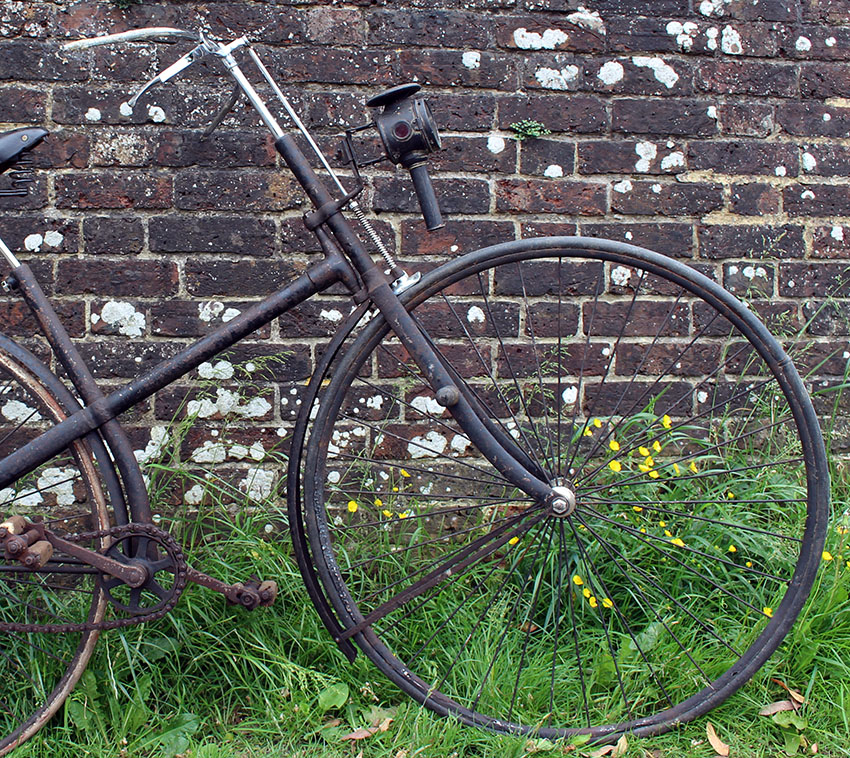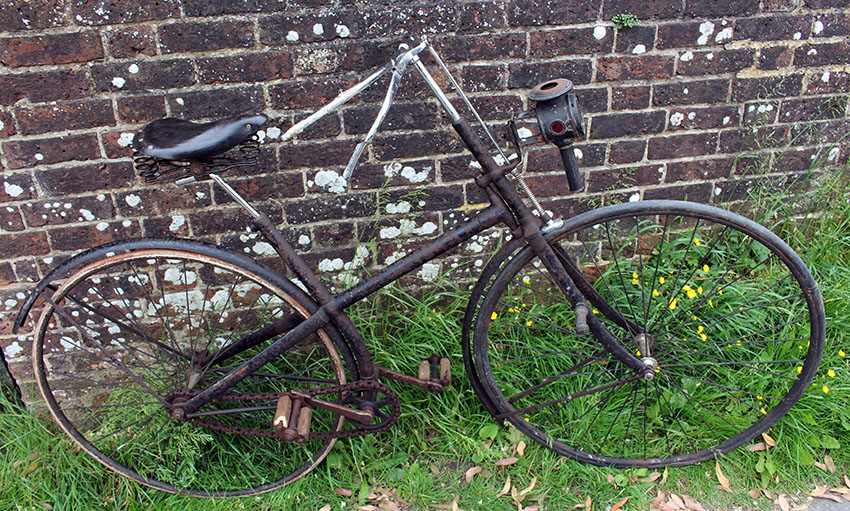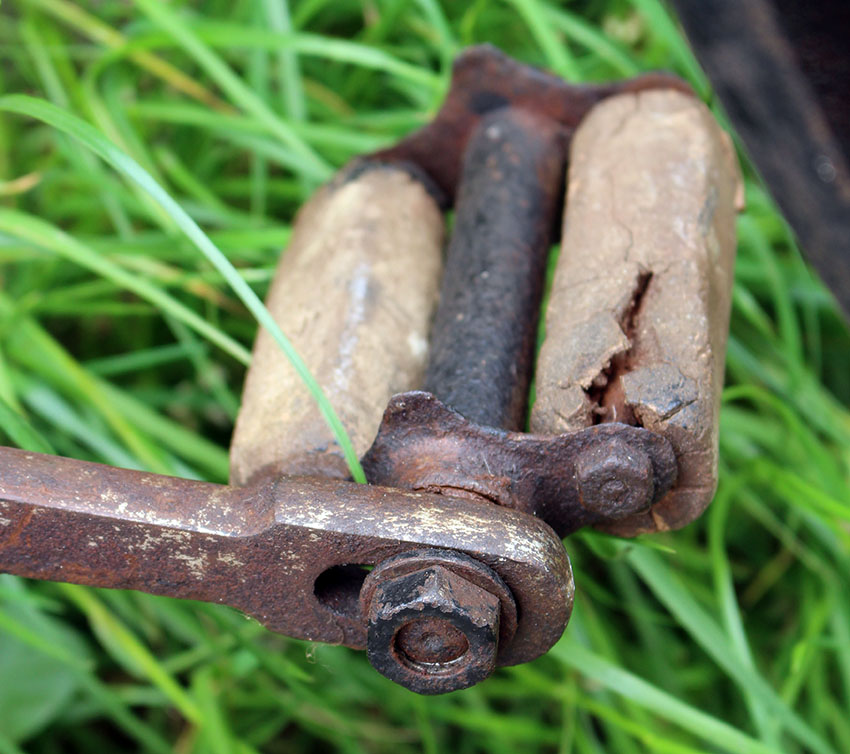


1888 Crossframe Safety Bicycle
attributed to Sharratt & Lisle
21″ Frame
30″ Wheels
Open head, Solid tyres
(Now sold)

This solid tyre crossframe safety – believed to have been made by Sharratt & Lisle (see below) – recently came out of decades of dry storage.
In the 1980s the owner had the handlebar and seat post chromed. The frame and working parts of this bicycle are in unrestored original condition and an inspection of the steering head indicates that the machine has had little use. The mudguards are also in excellent condition, whereas they are normally battered on a surviving bicycle of this era. The original pedals are worn (I would replace with good working condition replica safety bike pedals if required).
The rims and hubs are matching; the front tyre is slightly wider than the rear. The rear wheel is in excellent condition, while the front rim has had a repair sometime in its life and one spoke is loose. The front wheel is just about rideable as is, though if you were going to use it seriously, the front wheel should be rebuilt and solid tyre fitted (easily available).





SHARRATT & LISLE
(STAR CYCLE Co)
A partnership formed in 1876 by Edward Lisle and Edwin John Sharratt. Edward Lisle already had premises at Moorfields, Wolverhampton, but new premises were secured in Pountney Street, Wolverhampton, and later in Stewart Street.
Sharratt also formed a partnership with a Mr Parker and produced ‘Connaught’ bicycles from the Pountney Street premises. ‘Star’ high- wheelers were produced from c.1889-92. In 1883 the Star Cycle Co. (Sharratt and Lisle) Ltd was formed. The partnership was dissolved when Sharratt left to trade on his own account. Sharratt & Lisle was wound up in 1895 although machines continued to be advertised as Sharratt & Lisle until 1896 with the address as Stewart Street, Wolverhampton. In 1896 the Star Cycle Co. Ltd was formed by way of name change from the Star Cycle Co. (Sharratt and Lisle) Ltd and traded from the Stewart Street premises. Frame 10,317 was produced in 1895.




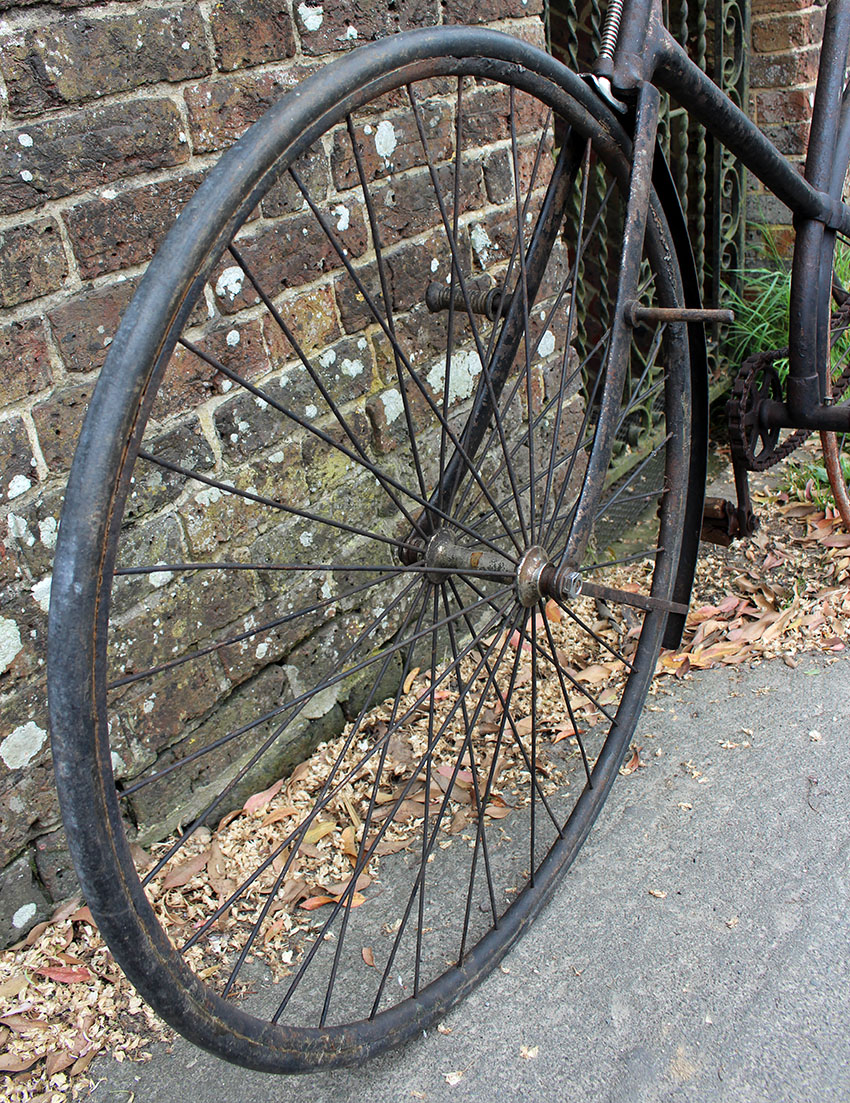











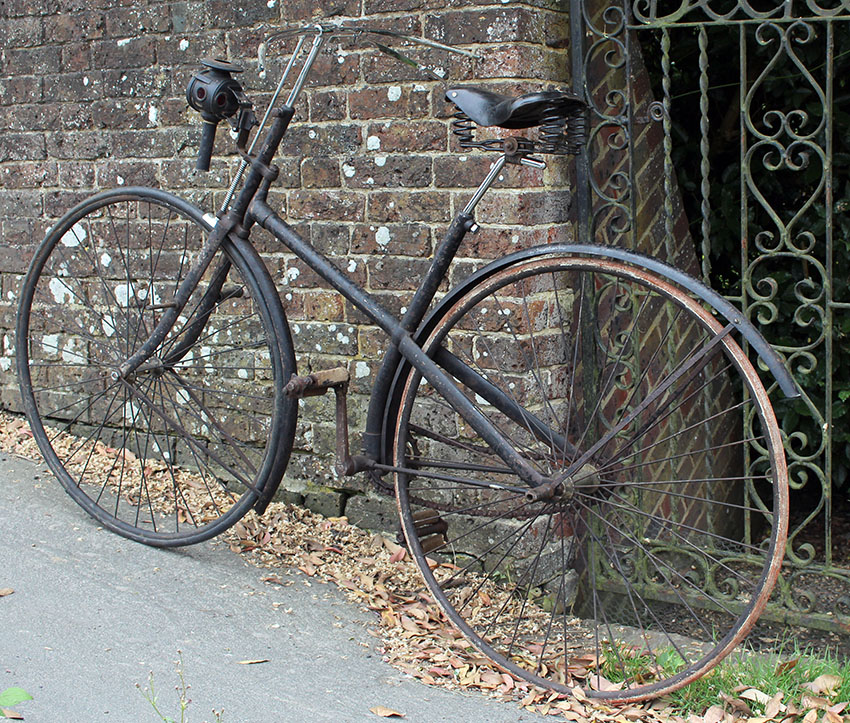

STAR CYCLE Co Ltd

Formed in 1896 with initial capital of £120,000 having previously been called Star Cycle Co. (Sharratt and Lisle) Ltd and trading as Sharratt and Lisle. The works were in Stewart Street, Wolverhampton, Staffordshire. The company made some Pedersen machines under licence from the Dursley Pedersen Cycle Co. and sold them at £34 each. In the same year the Presto Gear Case Co. Ltd was formed by the Lisle family. This made bicycle chaincases which were easily opened and removed by withdrawing two screws. By 1897 the Star company employed some 400 workers and by 1898 production was running at 9-10,000 a year. In that year the chief machines built were the ‘Star’ path racer, ‘Star’ road racer, ‘Star’ light roadster, popular ‘Star’, single and double steering tandems, the lady’s ‘Star’, the lady’s popular ‘Star’ and youth’s ‘Star’. These are fitted with Dunlop, Clincher, Warwick, or Beeston tyres; saddles of standard make, and ‘Presto’ chaincases. It is known that the firm made machines for other firms in 1898 such as for Walton. W. W. King was the company secretary in 1898.
In 1899 production reached 10,000 cycles a year, and by 1904 Star was the largest Wolverhampton based cycle manufacturer. The top model was the ‘La Grande’, which had Roman aluminium rims, a Fagan two speed gear, a Hyde free wheel clutch, aluminium mud guards, was lined in burnished gold, and sold for 15 guineas. There was also a lady’s model for 16 guineas. At the time the cheapest machine sold for £6.15s.0d, and a juvenile machine was available for £5.
In 1905 four grades of ‘Star’ were offered. The highest grade was ‘La Grande Star’ at £15.15s. The machine was lined in burnished gold. The equipment included a ball-bearing free-wheel and also a two speed gear if desired. The brakes were now operated by a neat arrangement of revolving levers on the handlebar. The rear rim brake is also placed high up, and supported from the back forks, instead of from the chain stays. The Model A at £12 12s. possessed many of the features of its more expensive brother. An option was given of having a New Departure hub and a front-rim brake only in place of the usual two rim brakes, a choice which is also extended to purchasers of the ‘Star’ Model B; at £10 10s. The inverted lever brakes were retained on this machine, which was fitted with Dunlop tyres and Westwood plated rims. There was a further Model C at £8 8s. which weighed about 30lb., with a choice of tyres between Warwick’s and Clipper’s.
In 1905 a deep depression started in the bicycle trade. There was strong competition from German and American imports and sales were lost to the new motorcycle and car producers. Although sales improved a little over the next few years, Star decided to end cycle production in 1909 to concentrate on powered vehicles.
Frame number 35,000 would be approximately October 1897 (it seems that the numbering continued from Sharratt and Lisle).



Information and illustrations with thanks to Ray Miller’s Encyclopaedia (every home should have one!)



































